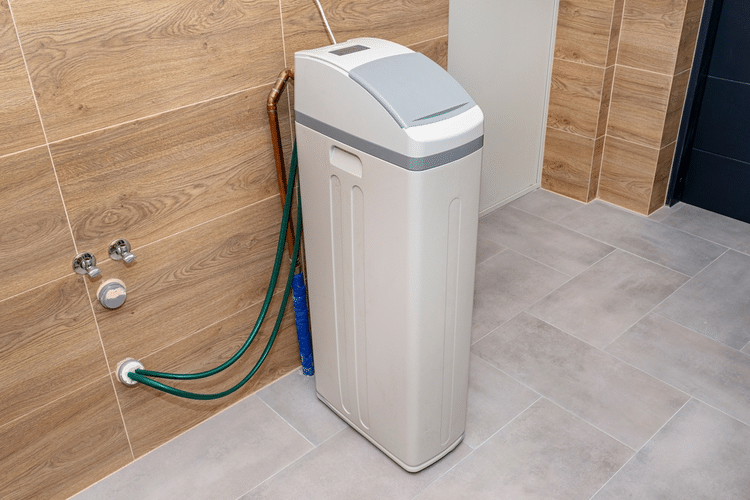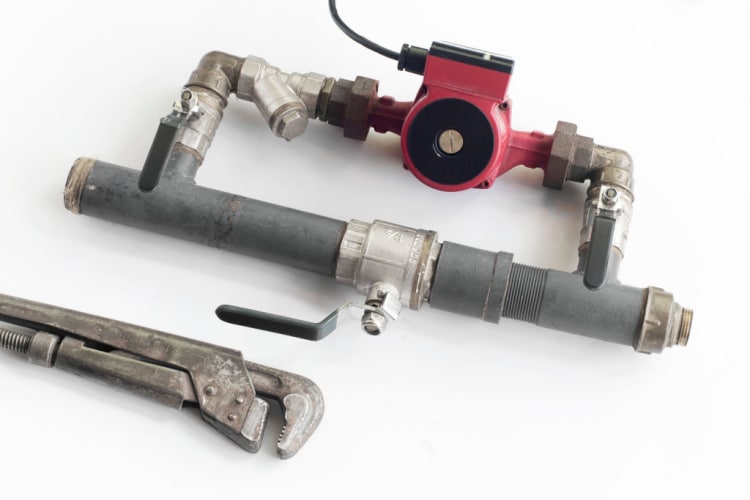Water softening devices are great at providing soft water for the whole household, but you don’t always require soft water. In that case, you can easily bypass your water softener by using the bypass knob, lever, or button that’s probably on the unit.
In this article, we’re going to tell you everything about different types of bypass options and give you a step-by-step guide on how to operate them.

When You May Want to Bypass Your Water Softener
In cases where you don’t need to use soft water, you may bypass the softening unit. That way, you’ll save salt and power.
Especially in the summer, when you use a lot of water outside to wash your car or to irrigate your garden, you won’t need to soften the water. Cars can handle a bit of hard water, and plants in the garden can benefit from all the minerals in the water supply.
In addition, there might be times when your water softener requires a bit of maintenance. A salt bridge might have formed inside the brine tank or a component of the unit might have been clogged by dirt or debris.
During maintenance, you can isolate the softening unit from the water flow instead of turning off all the water.
That’s also the case when there’s a leak in the unit. By bypassing, you won’t have to cut off all water when waiting for professional services to arrive and fix it.
Different Types of ByPass Systems

Three types of bypass setups are featured in the water softeners: a classic valve, a lever, or just a button. In addition, some softeners have a 3-valve bypass operation.
- Classic valve: Classic valves have a handle or a knob. More often than not, the direction you should turn the handle or knob to bypass is indicated on the valve. If not, check the operation manual for the device. Once you turn it in the said direction, it will deactivate the water flow into and out of the softening unit.
- Lever: Similar to classic valves, levers will also tell you in which direction to turn them to bypass.
- Button: Some water softeners will only feature a simple button for bypassing. In some cases, there’ll be two buttons: one for deactivating the water flow and the other for activating it.
- 3-valve bypass: In these systems that are mostly found in commercial settings, there are three different pipes: an inlet to the softening unit, an outlet from the softening unit, and a pipe that connects these two without ever interfering with the softening unit. All of these pipes will have their own valves. If your water softener device sports a 3-valve bypass, check the device manual for further instructions on bypassing.
How to Bypass Water Softeners Depending on the Bypass System
Now that we’ve covered all the bypass systems let’s walk you through how to bypass your system when you’re in no need of soft water.
How to ByPass With a Classic Valve
To bypass a water softener that features a classic valve setup, you need to follow the steps below:
- Find the knob or the handle of the valve. It’s mostly placed on top of the primary tank of the softening device. If not, check the sides.
- Turn the handle. Most of the time, these valves will have which direction to turn written. If not, just turn them clockwise until you can’t. You may also want to check the manual just to be sure.
- If the handle isn’t turning easily, it’s probably because of the pressure inside the softener. To make things easier, you might run a faucet connected to the softener for a while and relieve the pressure.
- You can turn the handle back and reactivate the system when you want to go back to softening your water.
Some softeners might have two valves: one for the incoming water and the other for the outgoing. In such cases, make sure you turn both.
How to ByPass With a Lever
To bypass a water softening unit that has a lever setup, follow these steps:
- Find the lever. Similar to the classic valve setup, it’s likely to be either on top of the tank or at the sides.
- Turn the lever in the direction specified on it. If there are no direction specifications on the device, check the manual.
- Once you need to soften water, return it to its original position.
How to Bypass With a Button
A softening device with a button setup can be bypassed by following the steps below:
- Find the button that says “bypass” on it.
- Push the button to deactivate the inlet and outlet of water.
- Reactivate the device by pushing it again once you want more soft water.
How to Bypass With a 3-Valve Setup
Although 3-valve setups are rarely found in houses, it might still help you to know how to operate them. You can bypass a water softening system that has a 3-valve setup by carrying out the following steps:
- Turn off the incoming water by turning the valve on the inlet pipe (check the manual to determine whether it’s the pipe on the left or right) clockwise.
- Turn off the outgoing water by turning the valve on the outlet pipe (the other pipe on the side) clockwise.
- Activate the bypass pipe by turning the valve on it counterclockwise.
- Once you’re done, return all the valves to their original states.
Conclusion
Bypassing your water softener when you don’t need soft water is quite economical since it saves salt and power. It’s also quite an easy operation.
All you need to do is to identify whether your device has a classic valve, lever, button, or a 3-valve setup for bypassing. Having done that, you can deactivate and activate your water softener by turning a knob or lever or pushing a button or two.